You Are Afraid of the Venomous Rabbit Saloon
Some people are afraid of Hermannplatz, others of Kottbusser Tor, but many more are afraid of Hasenheide Park.
Hermannplatz frightens lily-white Germans who have residual race fantasies about a Germany scored by Wagner. They don’t like all the immigrants. You can actually buy accusing t-shirts that say: Du hast angst vorm Hermannplatz! (You are afraid of Hermannplatz!)
Kottbusser Tor scares parents with children because they see young people here shooting up under the U-Bahn tracks, and it’s not the tremor of the trains making them shake like that.
But Hasenheide Park, just north of the Tempelhof airstrip, is the king of scarytime: 1. because it’s a park and darkness lurks behind the branches, 2. the eponymous hares are suppose to be venomous (Hasenheide of course literally means ‘field of hares’), and 3. it’s here that the drug addicts from Kotti buy their drugs from the marginalised immigrant men from Hermannplatz. It’s the ultimate conflation of provincial anxieties, à la Berlinoise.
Now, if you’re not a racist afraid of drug pushers in the park, you might like the following bar recommendation. The Neukölln neighbourhood folk don’t call it a bar though, it’s a Schänke, an old-fashioned word like a ‘saloon’. Some saloon: the Hasenschänke is built with 50’s concrete, with a low-slung modernist roof that you might see on a Niemeyer building in the tropics. It contains a kiosk delivering no-nonsense German beer to be consumed en plein air right in the middle of the so-called dodgy park. I can think of few more democratic places in the city to while away your time.
Out front are plastic chairs and tables you can move around as you like. Pensioners playing chess, alcoholics clutching their bottles, the homeless trying to collect them, families with children, hipsters, immigrants, gentrifiers, all coexist… everyone mixes happily at the Hasenschänke. The only people I don’t see hanging out here having a beer are the drug dealers who stand in formation at the intersections of the paths in certain corners of the park, looking out for the cops, no doubt, and keeping guard as people disappear into the trees for an exchange. The frisson I sometimes I get when passing them on a run is entirely absent at the Hasenschänke, perhaps because they are absent too.
I talk to two guys who appear quite inebriated, but it might simply be their excitement at showing me their bicycles which they have doctored with mirrors like antlers with bells that make animal sounds. They refer to them as their beasts. Perhaps their rolling animals are meant to compete with the street art covering the pavillion, depicting those dangerous hares getting up to no good: playing cards, appearing electrocuted. There’s another mural of someone who looks like a blogger taking notes. I chat to a couple waiting in line for beers who won’t stop talking. This strikes me as strange, because Berliners aren’t usually very loquacious. But anything goes in the Hasenschänke.
What is it about this space that breaks down barriers? Its utter lack of pretension? Its location in a public space? The feeling that no-one owns it? The zany murals? Is it its proximity to an outdoor cinema and an amazingly elaborate playground that gives it a festive feeling? Is it the benefit of contrast, as a calm space in a park where weird shit is happening in the bushes?
One dark night when riding my bike from Tempelhof airfield back home, I passed through the park. I had a moment of indecision, wondering whether it was a good idea. The trees loomed, the obscurity threatened the paths, the chain of lamp lights seemed insufficient and ever dimmer. Then I came to the clearing of the Hasenschänke, with a blaze of light, and the music from the film score to Moonlight Kingdom sounding just over the fence.
I breathed a sigh of relief and leaned by bike against a tree without locking it.
It’s time to stop for a beer.
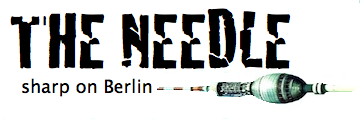
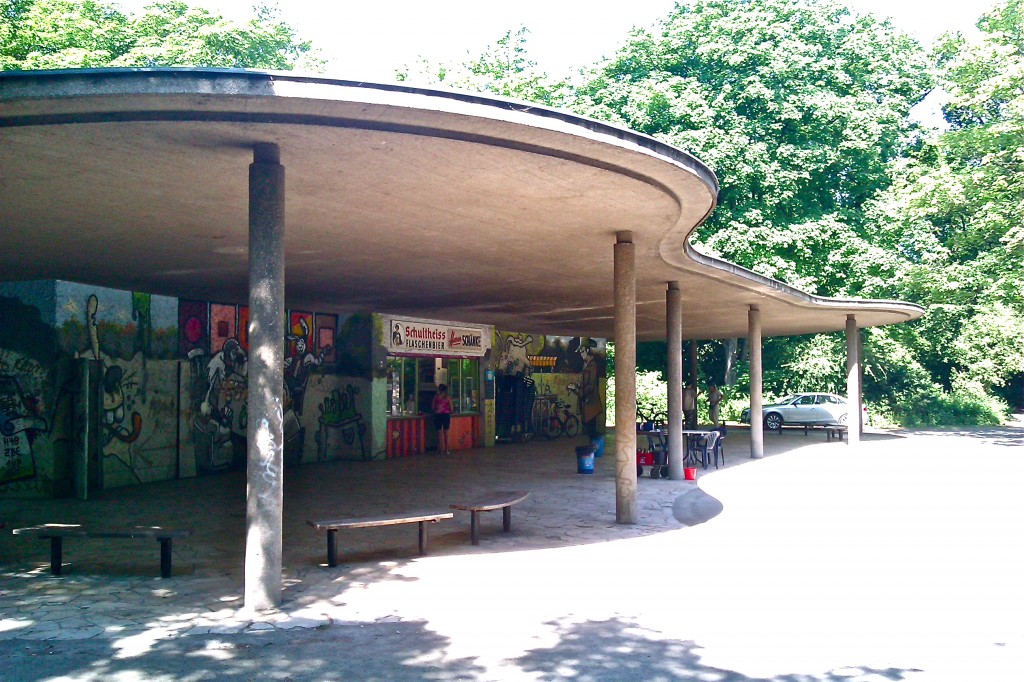
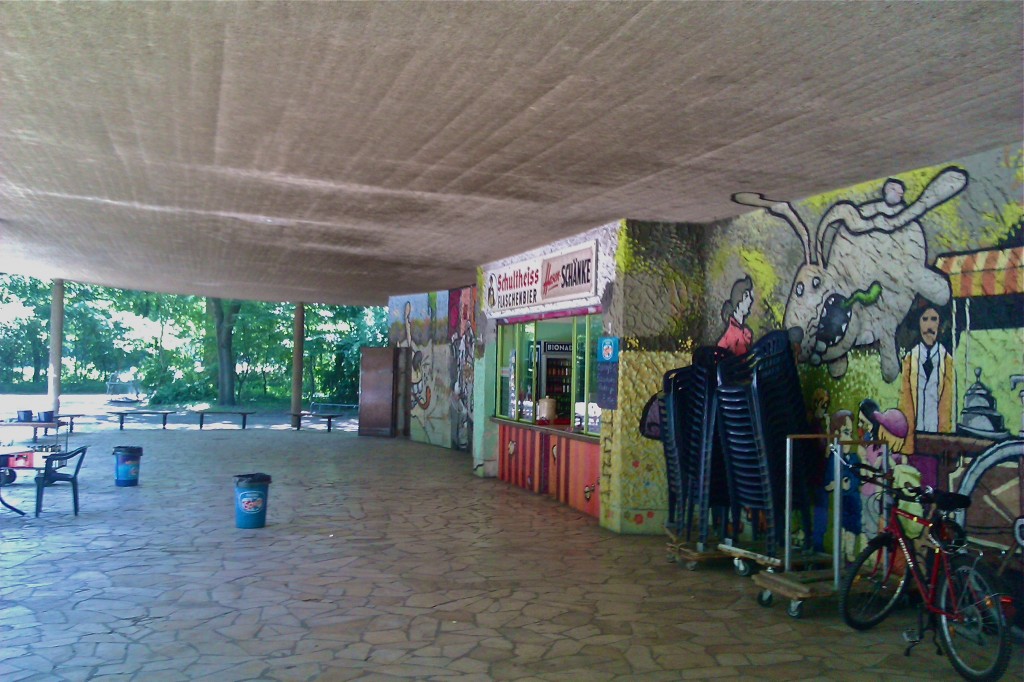
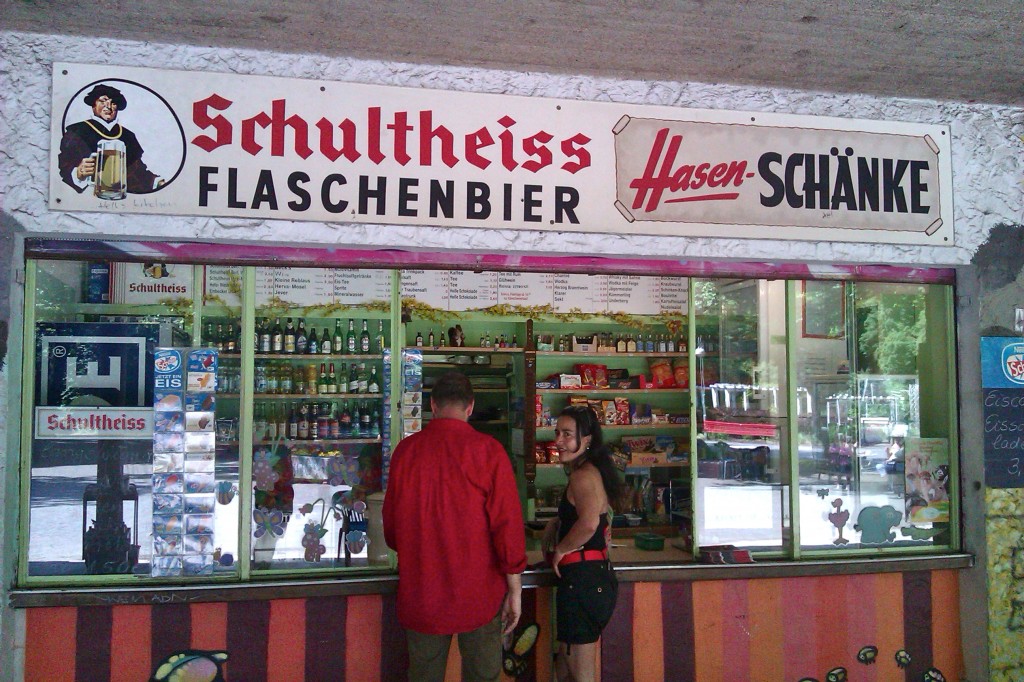

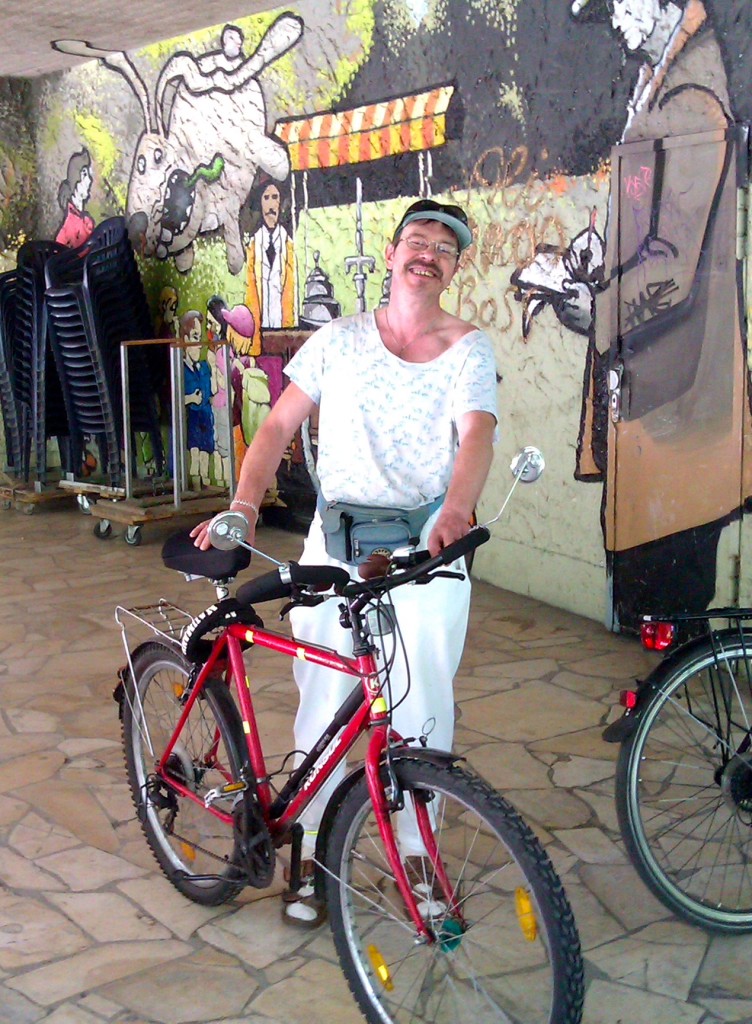
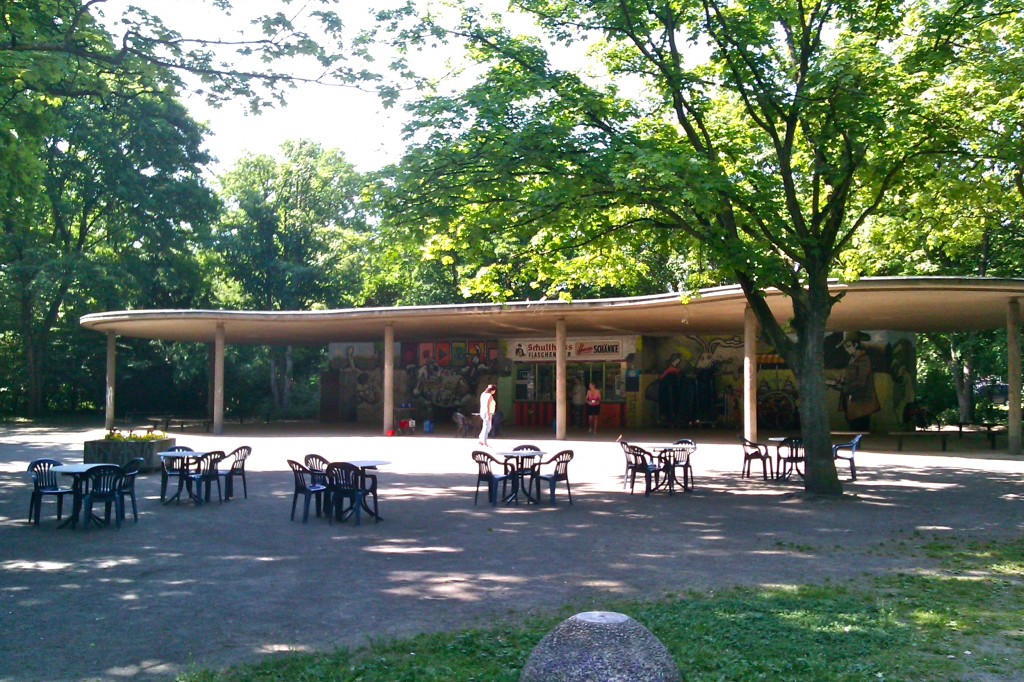
I went there this summer and (a bottle of) beer was expensive as f*ck!
Nice article.
I do think the negativity is a bit strong however. There is a drug scene at Kotti, but I have never seen anyone shoot up, and I find it hard to believe anyone is afraid of Hermannplatz.
In terms of the drug dealers in the park, I thought they were East Africans selling dope, like at Gorlizer Park, who sell because they are not allowed legally to work. As far as I know they don’t (and wouldn’t want to) sell anything else.
Thanks Patrick,
Thanks very much for your comments. I think how ‘negative’ you are about the park depends on what you are used to. I’ve unfortunately seen people shooting up at Kotti, but being from the West Coast of North of America, I think there’s a lot less of it here than I’m used to back home. Berlin is much less druggy than other places I have lived. Do many Berliners think it’s dangerous? Certainly. What I tried to capture in the article is the perception that people have of the neighbourhood, who aren’t very acquainted with it and who get their information from an alarmist media. An interesting article in the Berliner Zeitung shows that there is a high level of fear among Berliners, and talks too about the very real problem of used needles showing up in nearby playgrounds, in the U-bahn stations, etc.: http://www.berliner-zeitung.de/berlin/grosseinsatz-entlang-der-u-8-polizei–drogen–und-trinkerszene-verunsichern,10809148,16755426.html One thing the article does too is show how the drug scene is a little different at Hasenheide than at Gorli, alas, as it is all up and down the U8 Line. As for people being afraid of Hermannplatz, that is alas also a common phenomenon: the deep-seated prejudice against the platz among old-time West Berliners is so profound it’s even spanned a t-shirt industry! (see link in article) You don’t make money from nothing.
Best wishes, Joseph
Hi Joseph,
Thanks for the detailed reply.
I have no doubt that some people are frightened of various areas of Neukölln, but I guess I question how realistic these fears are.
I think many people frightened of unknown places where poor people or foreigners hang out. I have lived in such places in Boston, Melbourne, London and Berlin, and usually find the fear from outsiders to be out of all proportion to the real dangers/unpleasantness.
In Boston I lived in Jamaica Plain, and only one my co-workers would visit me because they were to afraid of being shot etc, which was embarrassing as it was basically a white mid-class area. In East London the gang culture is pretty bad where I used to live (this year I heard four people getting shot while lying in bed), the body of a young mother was left near our doorstep the day after Silvester, and there were regular stabbings etc near our house. At the same time it’s a pretty interesting area, and has started to become relatively trendy, with semi-detached houses there selling for 550000 Pounds.
I guess my sense is simply that you can’t take an areas reputation, especially from outsiders, too seriously.
I have used Kotti many times, and while I know there are drug addicts around there, I have never seen anyone shot-up (unlike in Frankfurt) and refuse to believe that this is the norm until I see it with my own eyes. I have talked to dealers in Hasenheide a few years ago, when there was a big fuss about the park, and they made it clear that they would have nothing to do with harder drugs. Of course, there might be other sorts of dealers there, or things might have changed, but my overwhelming impression is that the dealers there (like at Görli) are East African asylum seekers, who are unable to legally work, who sell MJ to survive.